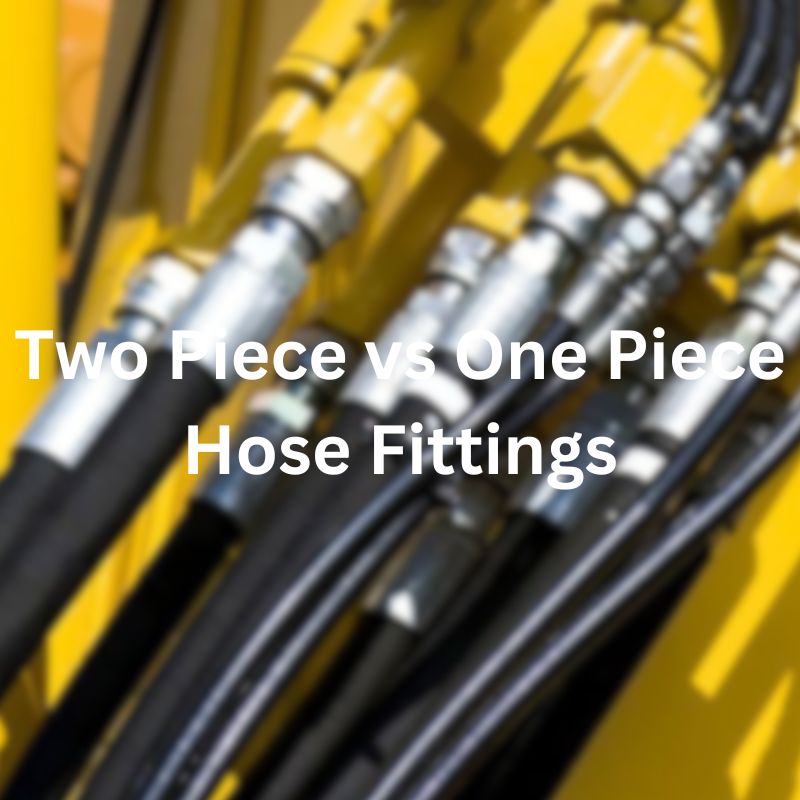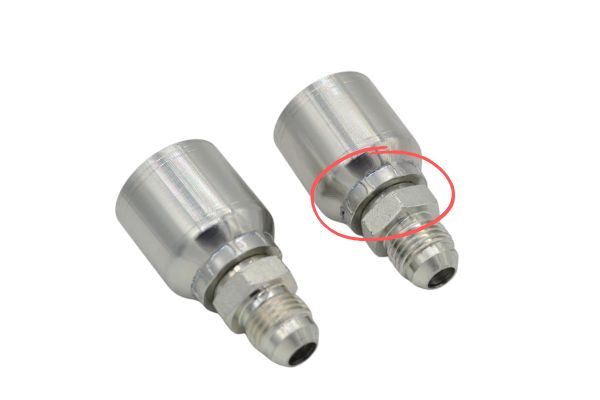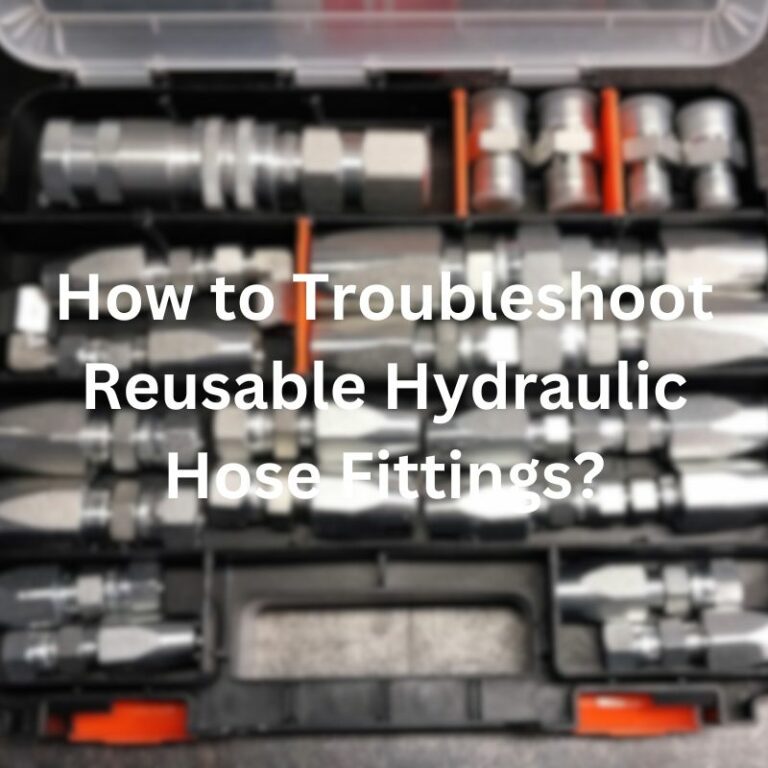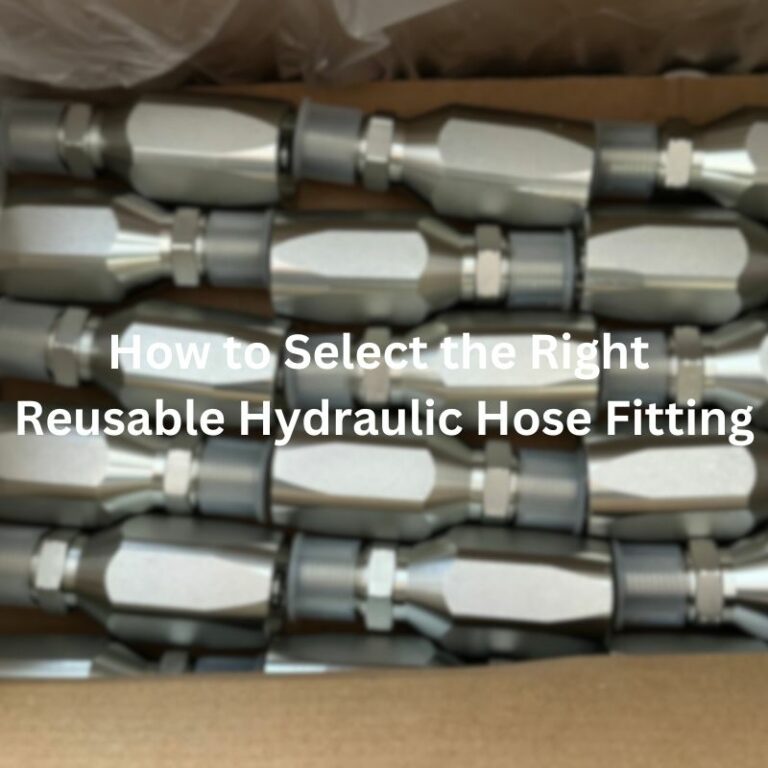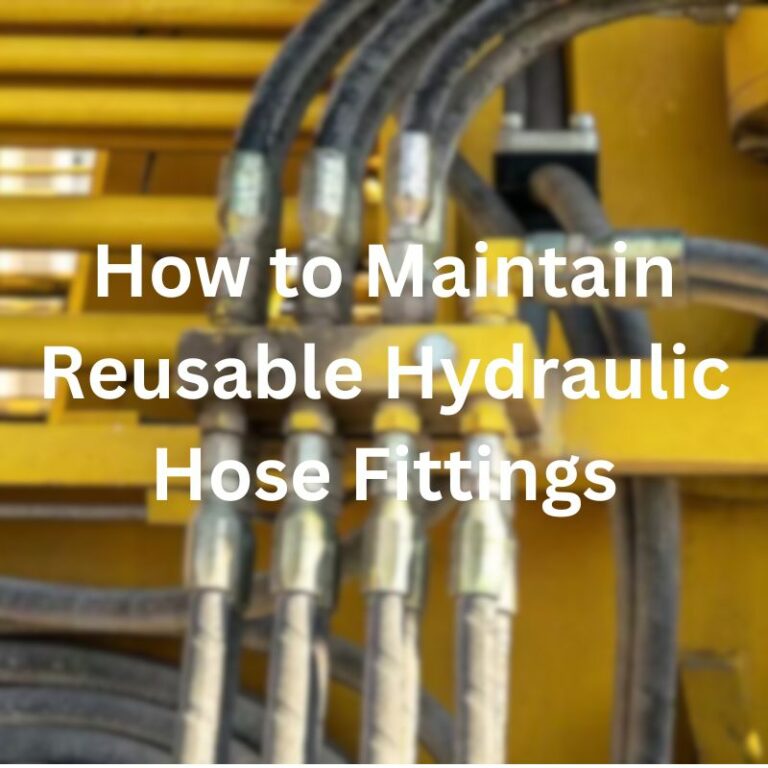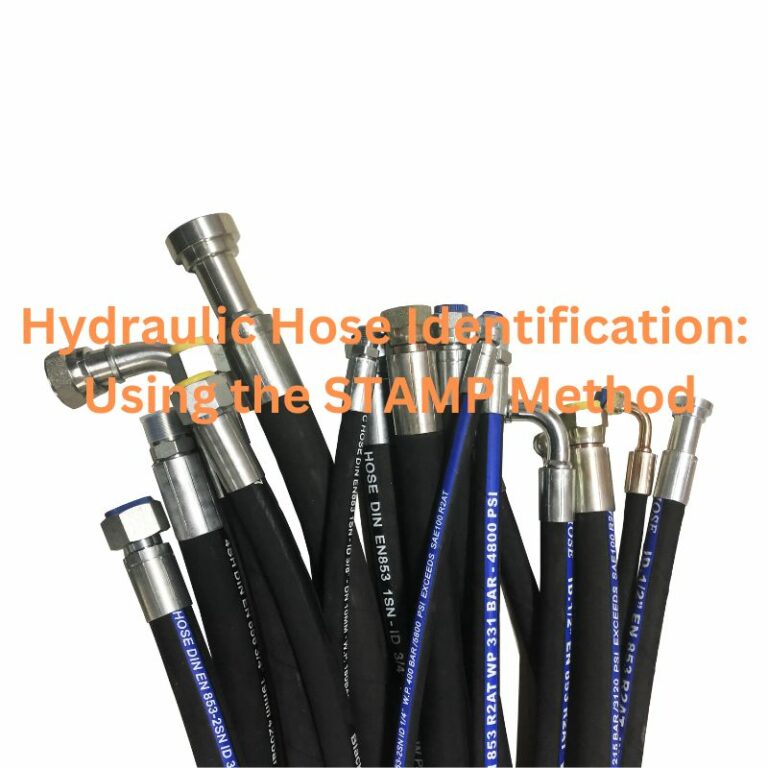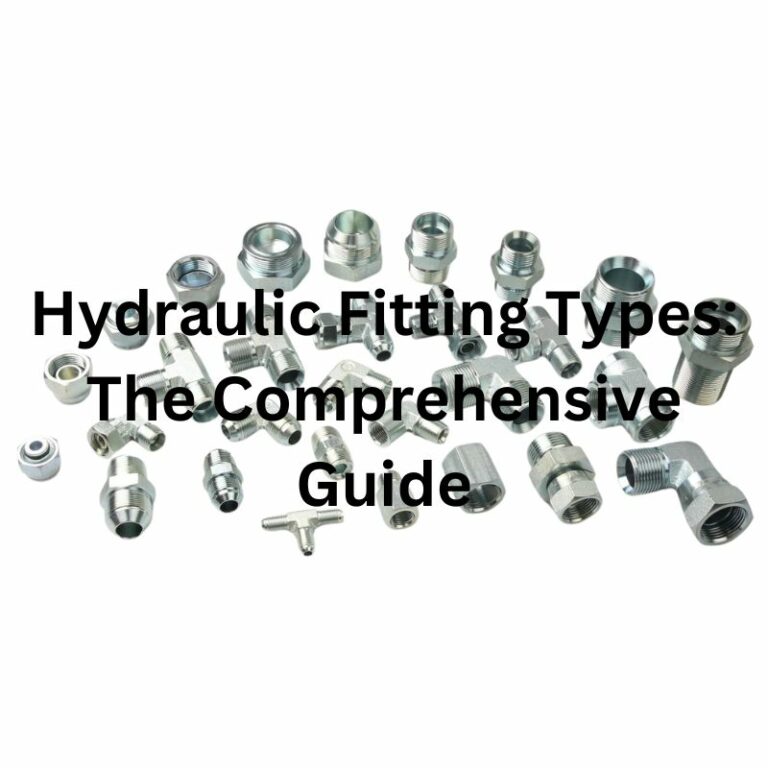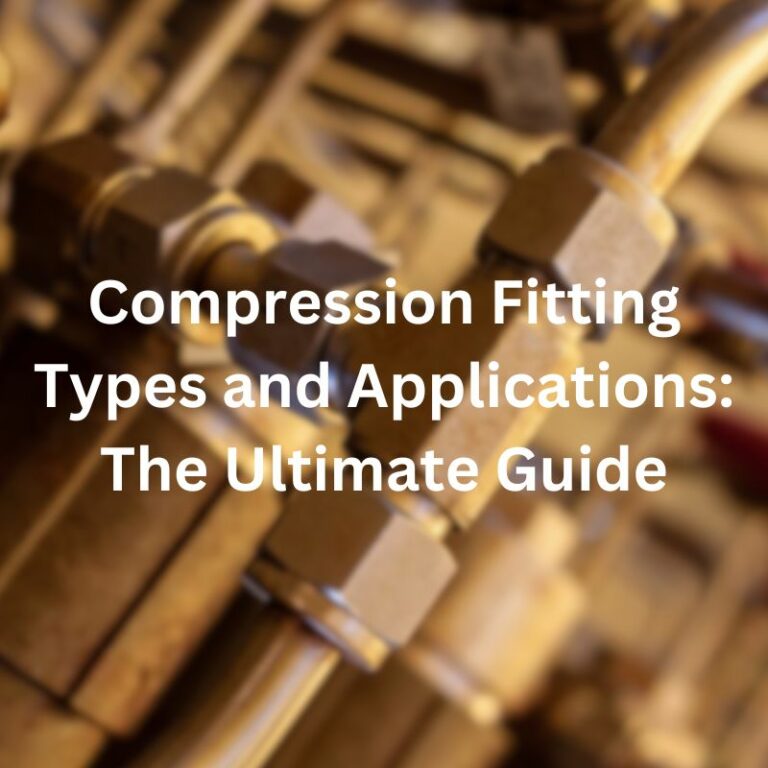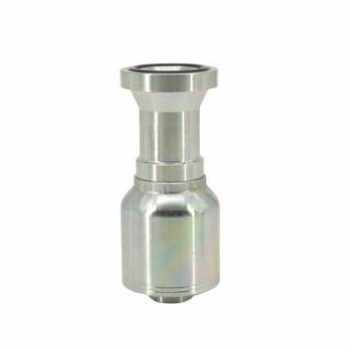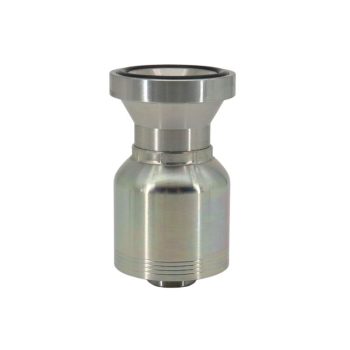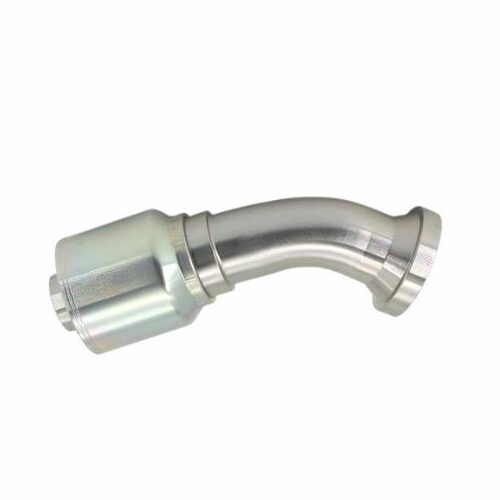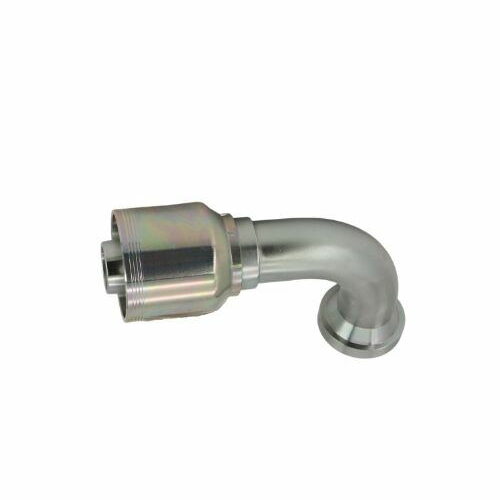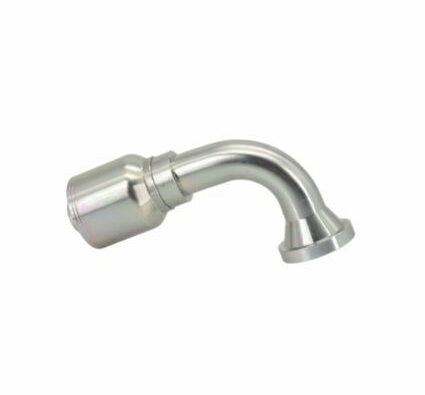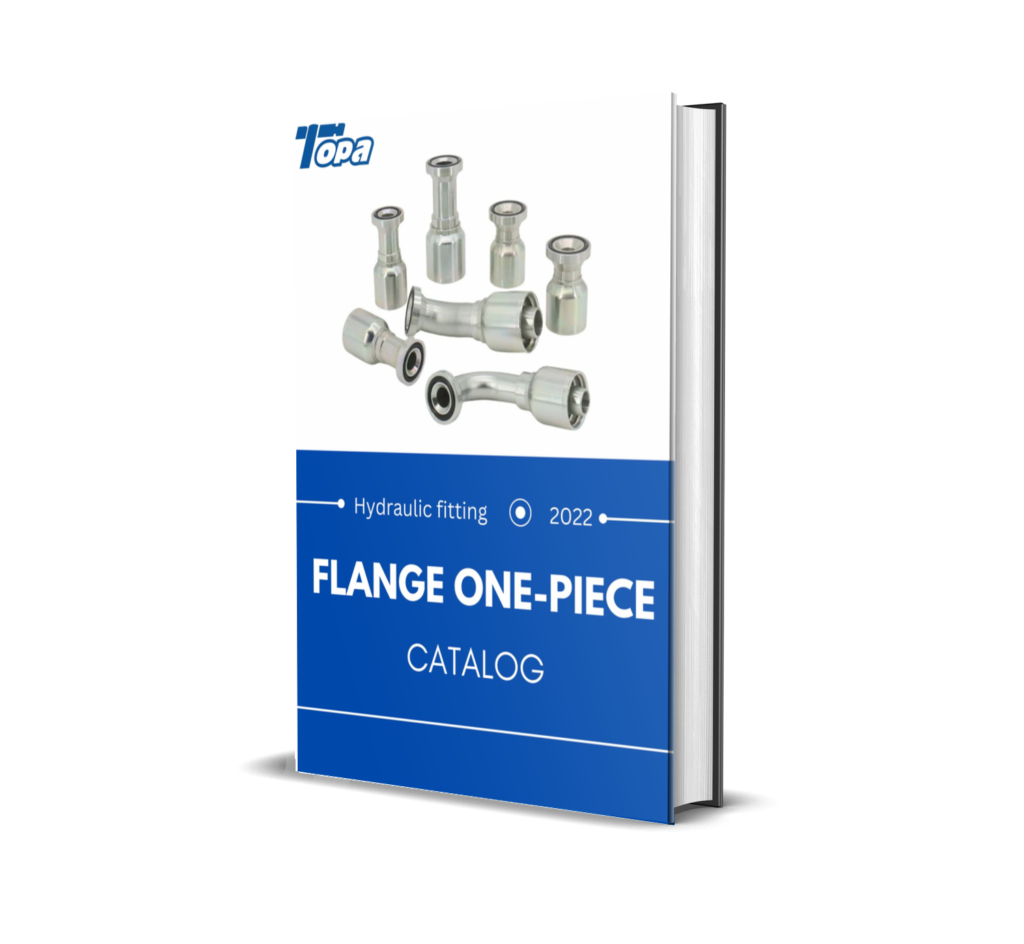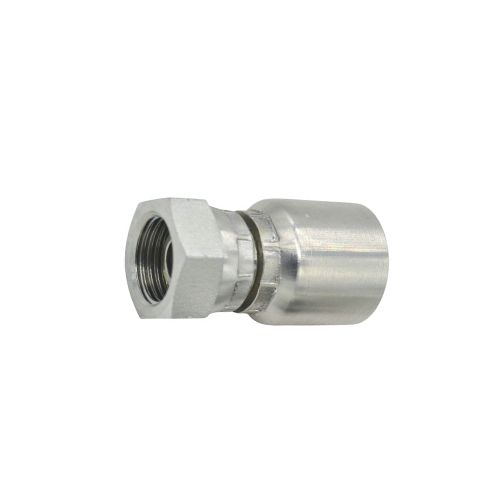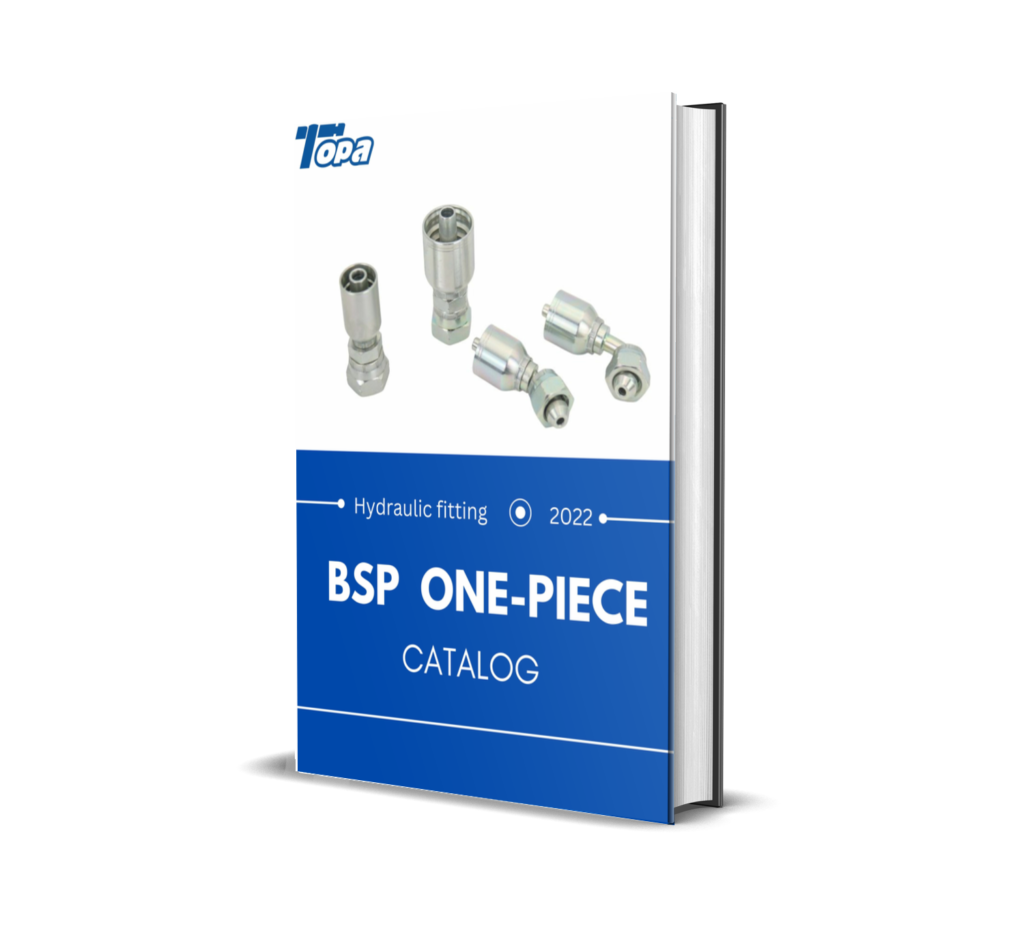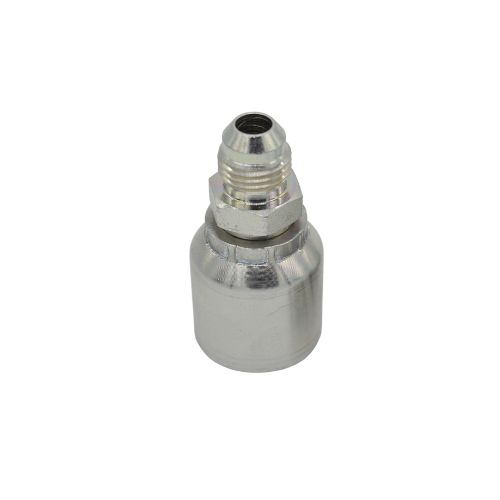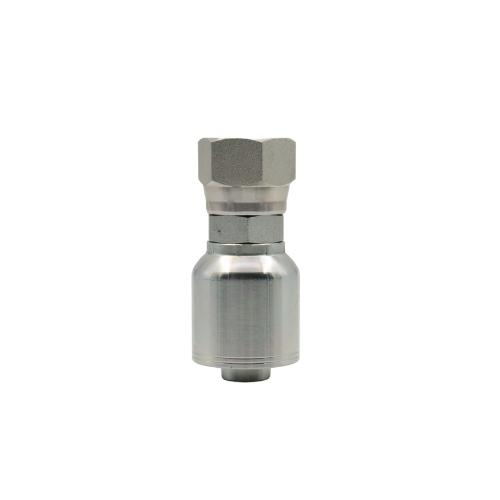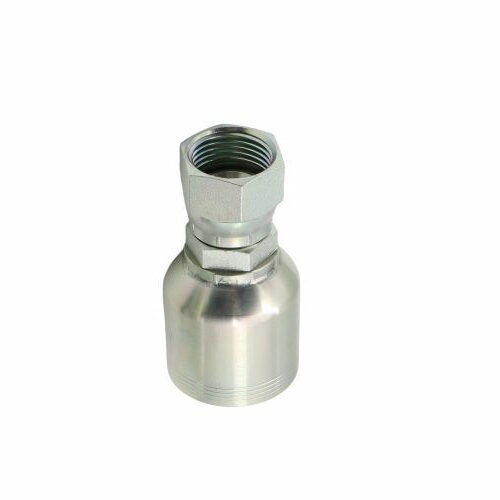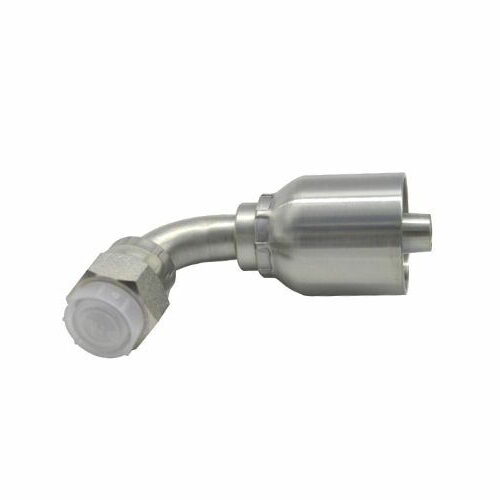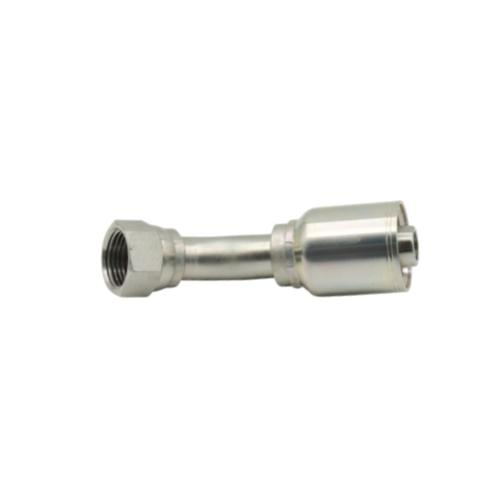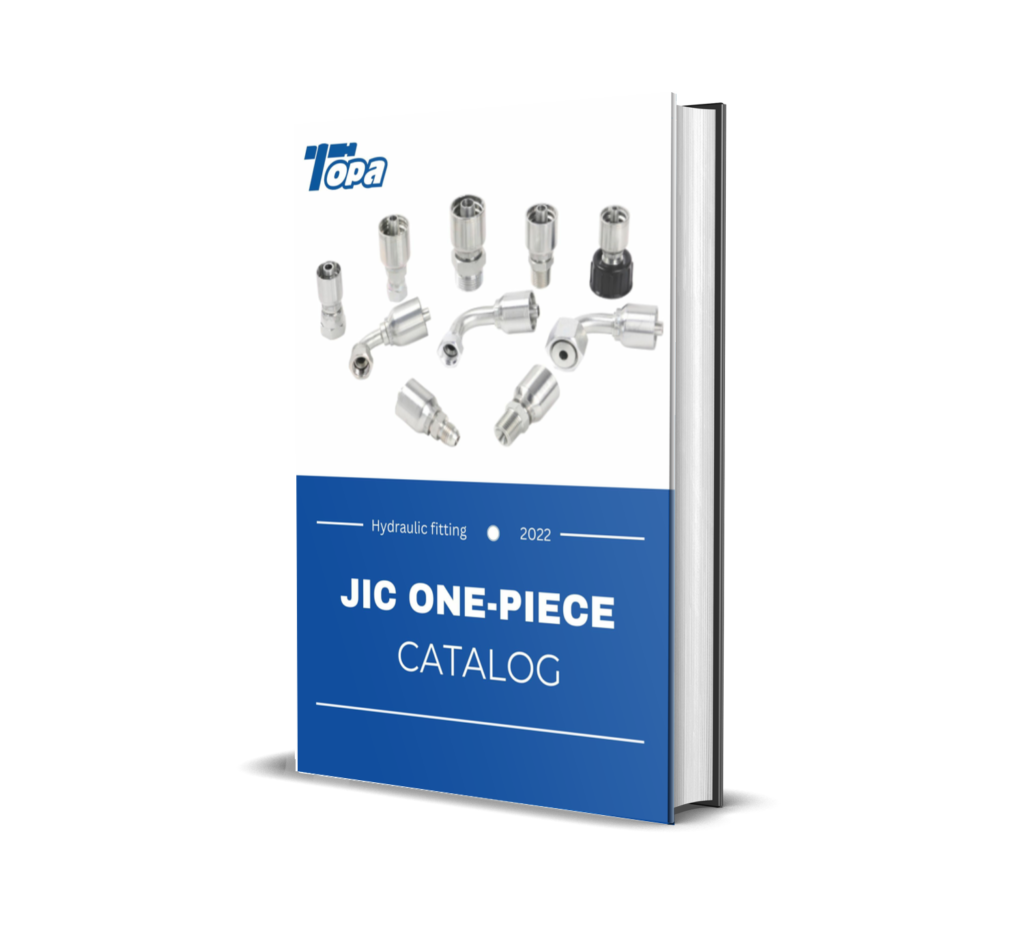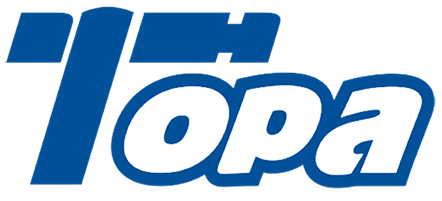Two Piece vs One Piece Hose Fittings: What's the Difference?
Introduction
Hose fittings are crucial components in hydraulic systems, connecting hoses to equipment and ensuring fluid flows efficiently and safely. The right type of hose fitting can significantly impact system performance, reliability, and maintenance needs. There are primarily two types of hose fittings used in hydraulic systems: two-piece and one-piece fittings. Each type offers distinct advantages and potential drawbacks, depending on the application. This guide will explore the key differences between these fittings, helping you make an informed decision for your hydraulic system needs.
Two-piece versus one-piece hose fittings: how to choose?
The choice between two-piece and one-piece hose fittings ultimately depends on the specific requirements of your hydraulic system, including factors like application pressure, environmental conditions, and the need for flexibility versus simplicity. Two-piece fittings offer greater adaptability and ease of assembly in complex or custom systems, making them suitable for scenarios requiring frequent adjustments or customization. One-piece fittings, on the other hand, provide a robust, leak-resistant solution ideal for high-pressure applications or environments where a secure and durable connection is paramount.
Two-Piece Hose Fittings
Two-piece hose fittings, comprising a stem and a ferrule, represent a versatile and adaptable solution in hydraulic systems. The stem, designed to be inserted into the hose, is complemented by the ferrule, which is crimped around the hose to secure the stem firmly in place. This assembly method ensures a robust connection that can be tailored to accommodate a wide variety of hose types and sizes, making two-piece fittings a universal choice for diverse hydraulic applications.
The construction of two-piece hose fittings is such that it allows for a significant degree of flexibility in terms of hose compatibility. Whether dealing with high-pressure scenarios or systems requiring specific hose materials, the two-piece design facilitates a secure and reliable connection.
Moreover, the design of two-piece fittings lends itself well to field assembly and disassembly. This is particularly advantageous in situations where hydraulic systems need to be modified or repaired on-site, offering a practical solution that minimizes downtime and enhances operational efficiency.
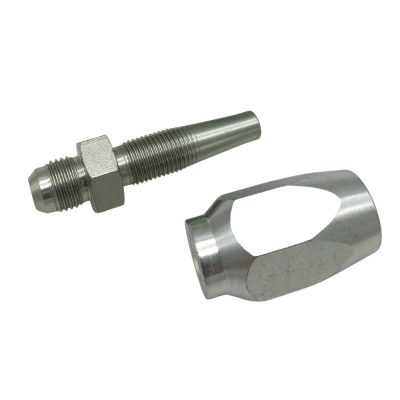
Advantages
Customization and Flexibility
The primary advantage of two-piece hose fittings lies in their inherent design flexibility. The separate stem and ferrule components allow for numerous combinations, ensuring compatibility with a broad range of hose types and sizes. This versatility is crucial in bespoke or highly specialized hydraulic systems where standard fittings may not suffice.
Ease of Assembly
Another significant benefit is the ease with which these fittings can be assembled, even in the most complex or cramped system configurations. The two-piece nature allows for adjustments and fittings in tight spaces, offering unparalleled versatility in system design.
Disadvantages
Potential for Leaks
However, the two-piece design is not without its drawbacks. The presence of multiple components in a single fitting can increase the risk of leaks, especially if not assembled with precision. Ensuring a leak-proof connection requires meticulous attention to detail and proper crimping techniques, which may not always be feasible in fast-paced or field conditions.
Longer Assembly Time
Additionally, the assembly process for two-piece fittings, while flexible, can be more time-consuming compared to one-piece alternatives. This increased assembly time can impact project timelines, especially in large-scale installations or when time is of the essence. Balancing the benefits of customization and flexibility against the potential for increased labor time is a critical consideration in the selection of hose fittings.
One-Piece Hose Fittings
One-piece hose fittings are engineered as a single, cohesive unit, offering a streamlined and robust solution for hydraulic connections. Their monolithic structure is designed to eliminate the potential weak points that can arise from the assembly of multiple components, as seen in two-piece fittings. This design significantly enhances the integrity and reliability of the connection, making one-piece fittings a preferred choice for high-pressure applications and environments where durability is paramount.
The construction of one-piece hose fittings is inherently simpler, with no separate ferrules or stems to manage. This simplicity translates into a stronger bond between the hose and fitting, reducing the likelihood of leaks and disconnections under pressure. The uniform design also aids in maintaining consistent fluid flow, minimizing turbulence and resistance that can affect system performance.
Applications
One-piece hose fittings are ideally suited for hydraulic systems where reliability and ease of maintenance are critical. Their robust design makes them perfect for high-pressure applications, including mobile hydraulics, industrial machinery, and heavy equipment. The inherent strength and leak resistance of one-piece fittings also make them a preferred choice in harsh environments, where exposure to extreme pressures, temperatures, and corrosive substances is common.
These fittings are particularly beneficial in applications where the assembly time and potential for leaks need to be minimized, such as in production lines, aerospace, and automotive applications. The simplicity and reliability of one-piece fittings ensure that hydraulic systems remain operational and efficient, with minimal downtime for maintenance or repairs.
Advantages
Reduced Risk of Leaks
The single-piece design of these fittings significantly reduces the risk of leaks, a common issue with multi-component connections. By eliminating the junctions between separate parts, one-piece fittings provide a more secure seal, ensuring that hydraulic fluid is contained within the system under all operating conditions.
Quicker and Simpler Assembly Process
One-piece fittings streamline the assembly process, allowing for quicker installation with less room for error. This efficiency can lead to significant savings in labor and downtime, especially in large-scale operations or when frequent system modifications are not required. The simplicity of design also means that specialized tools or skills are less critical, further reducing the time and cost associated with installation.
Disadvantages
Limited Flexibility and Customization
The main drawback of one-piece hose fittings is their limited flexibility when it comes to customization. The monolithic design, while robust, does not allow for the same level of adaptability as two-piece fittings, making them less suitable for systems requiring specific configurations or frequent modifications.
Possible Challenges in Installation Due to Rigid Design
The rigid nature of one-piece fittings can pose challenges during installation, particularly in tight or complex spaces. The inability to adjust the components separately means that the hose and fitting must align perfectly, which may not always be feasible in constrained environments. This can lead to difficulties in routing hoses or necessitate changes in system design to accommodate the fittings.
Key Differences and Comparisons
In the hydraulic fittings world, the choice between one-piece and two-piece hose fittings comes down to a series of trade-offs involving performance, installation convenience, maintenance, and cost. Understanding these differences is crucial for selecting the most appropriate fitting for a given application.
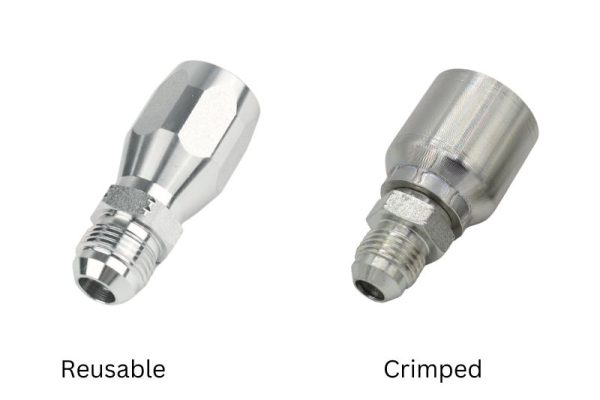
Performance and Reliability
Leak Prevention: One of the most significant advantages of one-piece hose fittings is their superior leak prevention capabilities. The monolithic design minimizes potential failure points, offering a more secure and leak-resistant connection. In contrast, two-piece fittings, while highly versatile, can be more prone to leaks if not assembled correctly due to their multi-component nature.
Installation and Maintenance
Ease of Installation: One-piece fittings generally offer a quicker and simpler installation process, with fewer steps involved and no need for ferrule management. This can be particularly advantageous in large-scale projects or when time is of the essence. Two-piece fittings require a more complex assembly process, which can be more time-consuming but allows for greater flexibility in fitting and hose combinations.
Maintenance Requirements: The simplicity of one-piece fittings translates into lower maintenance requirements, as fewer components could fail or require adjustments. Two-piece fittings, by nature of their design, might necessitate more frequent checks and adjustments to ensure the integrity of the connection, especially in systems subject to vibration or thermal cycling.
Long-Term Durability: Both fitting types are designed for durability, but the single-piece construction inherently offers a slight edge in environments where the connection is subjected to continuous stress. Two-piece fittings can be equally durable, provided they are correctly assembled and maintained.
Cost Implications
Initial Costs: The manufacturing process for one-piece fittings is generally more complex, potentially making them more expensive upfront than two-piece fittings. However, the cost must be evaluated in the context of the entire system, considering factors like assembly time and potential for leaks.
Maintenance Costs: Over the life of a hydraulic system, two-piece fittings may incur higher maintenance costs due to the potential need for adjustments or replacements. Conversely, the reduced risk of leaks and lower maintenance requirements of one-piece fittings can result in long-term cost savings.
Potential Savings: While one-piece fittings might have a higher initial cost, the potential savings in terms of reduced maintenance and downtime can offset this over time. The choice between one-piece and two-piece fittings should, therefore, be made considering both immediate and long-term financial impacts on the system.
Selecting the Right Hose Fitting for Your Application
When it comes to selecting the right hose fitting for your hydraulic system, several factors come into play. Understanding these can help ensure optimal performance, reliability, and cost-efficiency of your system. Here’s what to consider and some recommendations for different scenarios.
Factors to Consider
Hydraulic System Requirements: The pressure rating, temperature range, and type of fluid used in your system will dictate the type of fitting required. High-pressure systems, for example, may benefit from the robustness of one-piece fittings, while lower-pressure systems may afford the flexibility of two-piece fittings.
Environmental Conditions: Conditions such as temperature extremes, exposure to corrosive substances, and potential for physical impact or abrasion can influence fitting selection. One-piece fittings, with fewer potential leak points, might be preferable in harsh environments.
Cost: Initial investment vs long-term maintenance and operational costs should be weighed. While one-piece fittings might have a higher upfront cost, their reliability and lower maintenance requirements can offer savings over time.
Recommendations for Different Scenarios
High-Pressure Applications: For systems operating under high pressure, one-piece fittings are recommended due to their superior strength and reduced potential for leaks.
Dynamic or Vibration-Prone Environments: In applications where the system is subject to movement or vibration, two-piece fittings offer the flexibility and adjustability needed to maintain a secure connection.
Complex Routing Needs: When the hydraulic system requires hoses to be routed through tight or complex paths, two-piece fittings provide the adaptability necessary to accommodate such configurations.
Rapid Assembly and Maintenance: For projects where time is a critical factor, or frequent modifications are expected, one-piece fittings can offer quicker assembly and lower maintenance, speeding up the process and reducing system downtime.
Cost-Sensitive Projects: When initial cost is a major concern, two-piece fittings might be the more economical choice. However, consider the potential for increased maintenance costs and the impact of any system downtime.
Harsh Environmental Conditions: In settings exposed to harsh chemicals, extreme temperatures, or other challenging conditions, one-piece fittings’ robust design can provide the reliability and durability needed to withstand such environments.
Ultimately, the choice between one-piece and two-piece hose fittings depends on a balance between system requirements, environmental conditions, cost considerations, and the specific demands of the application. It’s crucial to conduct a thorough analysis of these factors in the context of your hydraulic system to make an informed decision. Consulting with a hydraulic systems expert or the fitting manufacturer can also provide valuable insights tailored to your specific needs.
Conclusion
In conclusion, the decision between two-piece and one-piece hose fittings hinges on a nuanced understanding of your hydraulic system’s requirements. We’ve explored the key differences, including the adaptability and customization offered by two-piece fittings versus the robustness and leak resistance of one-piece designs. Choosing the right fitting is crucial for ensuring system efficiency, reliability, and longevity. It’s imperative to weigh factors such as application pressure, environmental challenges, and the need for flexibility or simplicity. I encourage readers to carefully consider both options in light of their specific system demands, ensuring the selection aligns with both immediate and long-term operational goals. Making an informed choice will not only optimize your hydraulic system’s performance but also enhance its overall productivity and durability.
For more insights and detailed guides on optimizing your hydraulic systems, we invite you to continue exploring Topa’s articles. Dive deeper into our knowledge pool to uncover expert advice, innovative solutions, and industry-leading practices that can help elevate your hydraulic system’s performance. If you have any questions or are ready to place an order, don’t hesitate to contact us directly. Our team is eager to assist you in finding the perfect solution tailored to your specific needs.

